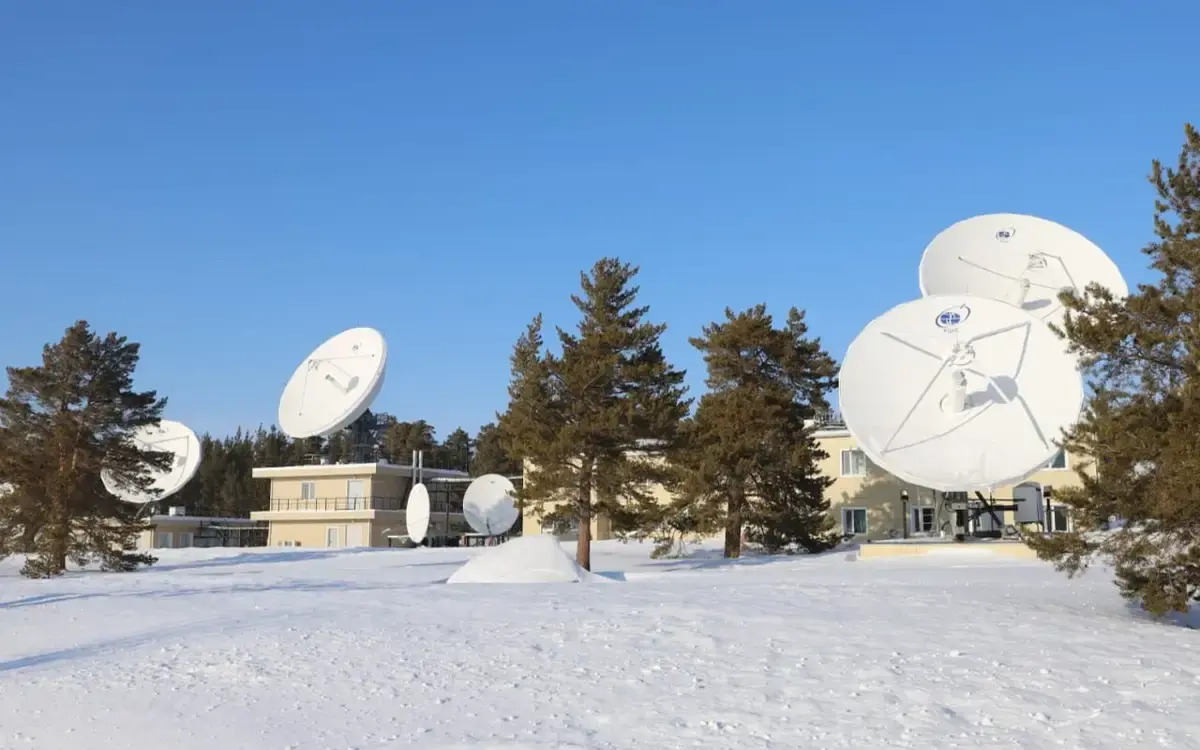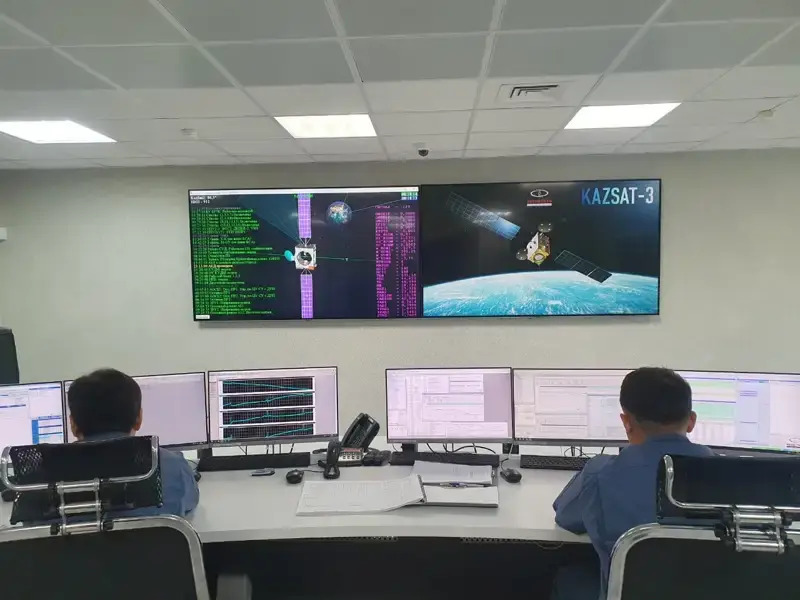ASTANA – The Republican Space Communications Center (RSCC), recognized as the nation’s pioneer in establishing ground-based space infrastructure, celebrates its 20th anniversary this March, reported Kazinform agency.

Photo credit: Kazinform
Kazsat communications and broadcasting satellites are managed from the main object of the RSCC – the Akkol Space Communications Center (SCC), located in the Akkol district of the Akmola region.
According to Bekbolat Azayev, the director of the Mission Control Center (MCC) and deputy head of SCC Akkol, the MCC is organized into three main departments. The first is the Mission Control Department (MSD), which was originally established in 2004 as a department within the RSCC. The other two are the Flight Support and Technical Condition of Spacecraft Department (FSTCSD) and the Ballistic Navigation Support Department (BNSD).
Mission Control Department
The team of 10 engineers of the MSD conducts continuous monitoring and management of Kazakhstan’s communication and broadcasting spacecraft. Over the years, they have addressed many emergencies caused by space-related factors and conducted numerous communication sessions with the issuance of radio commands.

Photo credit: Kazinform
“From the very beginning, our department, which has evolved into a cohesive team of highly skilled space communications specialists, aimed to ensure the precision of space flight coordination and information security of communications,” said Arshidin Islamov, head of MSD and deputy head of the MCC.
With technological advancements and accumulated expertise, the MSD has adapted to emerging challenges and standards in mission control, establishing itself as a reliable center for satellite coordination and control.
Flight Support and Technical Condition of Spacecraft Department
According to the head of FSTCSD, Bolat Egeubaev, specialists of this department are responsible for monitoring the technical condition of spacecraft, analyzing the functioning of onboard systems and formulating work plans. The department, which consists of five employees, has maintained an exemplary record without a single technological violation throughout the years of Kazsat’s existence.
Throughout the operation of the satellites, the department’s specialists have encountered situations that have enriched their experience. One notable incident occurred in 2015 when heightened solar activity resulted in numerous malfunctions on satellite KazSat-2. Through their expertise and dedication, specialists restored full-time management of the satellite.
The personal responsibility of each specialist in spacecraft management and the mutual support plays an important role. “For example, the leading engineer of the department and a veteran of the RSCC, Kaysar Duzelov, represents the first detachment of space communications engineers in Kazakhstan. At the same time, we are proud of our young specialist Daria Komarova, who has been working for only three years and is proving her responsibility in practice,” said Egeubaev.
Navigation and Ballistic Support Department
The department aims to ensure the safety and reliable operation of the satellite in an aggressive space environment. NBSD consists of three members: Aibek Tleuliyev, the head of the department; Alexander Stytsura, a leading veteran engineer; and Karina Pankereeva, a young specialist.
They calculate spacecraft motion parameters based on current navigation data and devise a strategy to keep the satellite accurately positioned in geostationary orbit while minimizing fuel consumption. This involves monitoring maneuvers, calibrating engines, and planning orbital corrections to avoid hazardous encounters with other objects.
According to Pankereeva, ensuring the safe operation of the satellite requires receiving advanced information about dangerous approaches to other spacecraft and space debris, as well as data on their orbits. Such information is provided by an American company that controls systems designed to track and identify all artificial objects in Earth’s orbit.
“Each alert undergoes scrutiny by NBSD specialists before deciding on an evasion maneuver,” Pankereeva added.
“We track the frequency of dangerous encounters to predict their appearance in the Kazsat satellite holding area. This allows us to plan control cycles, avoid dangerous approaches, and significantly save fuel,” said Stytsura.
According to Tleuliyev, it is possible to increase the operational life of satellites in orbit due to the development of innovative methods of motion control that consider the space environment and the requirements of specific missions.
The period of active life of the Kazsat-2 satellite, launched in July 2011, was supposed to end on Feb. 26. However, it was prolonged for another two years, due to the engineers’ professionalism and meticulous maintenance of the equipment.
SCC Accol also includes a Communications Monitoring Center, a Hardware, Software and Metrological Support Center, as well as energy supply and logistics services. Additionally, there is an apartment building for employees.
“This is the first and unique technical compound of space communications in Kazakhstan,” said Director of the SCC Accol Kairat Telgarin.


